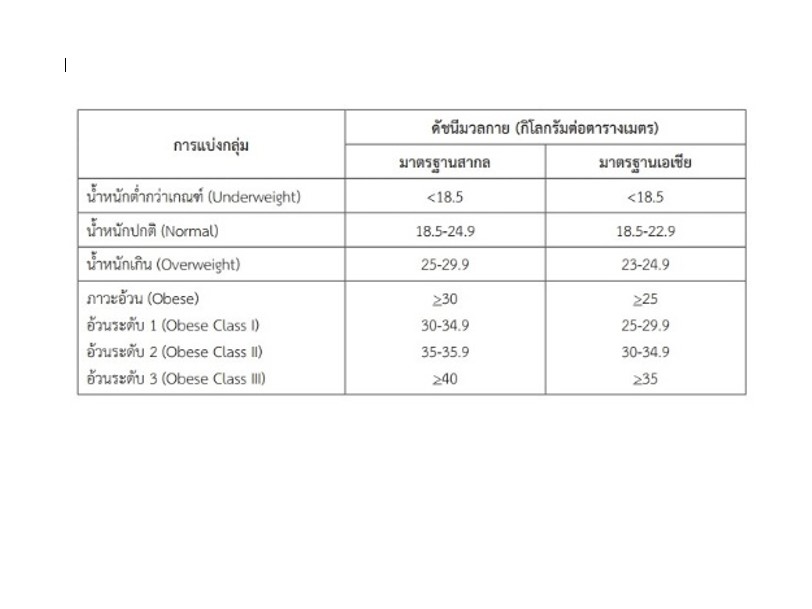บทบาทพยาบาลกับการดูแลสตรีตั้งครรภ์ที่มีภาวะน้ำหนักเกินและอ้วน
คำสำคัญ:
สตรีตั้งครรภ์ , ภาวะน้ำหนักเกินและอ้วน , และบทบาทพยาบาลบทคัดย่อ
ภาวะน้ำหนักเกินและอ้วนเป็นปัญหาสุขภาพและเป็นสาเหตุของการเกิดโรคไม่ติดต่อเรื้อรัง พบได้ในประชากรทั่วโลกรวมถึงประเทศไทย ทั้งในวัยเด็ก วัยรุ่น ผู้ใหญ่ ผู้สูงอายุ โดยเฉพาะสตรีตั้งครรภ์ด้วย ซึ่งภาวะน้ำหนักเกินและอ้วนมีผลกระทบต่อสุขภาพของสตรีตั้งครรภ์และทารกในครรภ์ทั้งในระยะสั้น และระยะยาว สาเหตุสำคัญที่ทำให้มีภาวะน้ำหนักเกินและอ้วน คือ ภาวะไม่สมดุลของพลังงานที่ร่างกายได้รับจากการรับประทานอาหาร และการใช้พลังงาน ซึ่งหากสตรีตั้งครรภ์ไม่สามารถควบคุมน้ำหนักตัวขณะตั้งครรภ์ได้ จะก่อให้เกิดผลกระทบต่อสตรีตั้งครรภ์และทารกในครรภ์ทั้งด้านร่างกายและจิตใจ ดังนั้น พยาบาลผดุงครรภ์เป็นบุคคลที่มีความสำคัญในการคัดกรองภาวะเสี่ยง ให้การดูแลสุขภาพในสตรีตั้งครรภ์ที่มีภาวะน้ำหนักเกินและอ้วนให้สามารถควบคุมน้ำหนักตัวขณะตั้งครรภ์ เพื่อให้เกิดการดูแลสตรีตั้งครรภ์อย่างมีประสิทธิภาพ และลดภาวะเสี่ยง รวมถึงการป้องกันผลกระทบจากการมีภาวะน้ำหนักเกินและอ้วนขณะตั้งครรภ์ที่อาจเกิดขึ้นตามมา
เอกสารอ้างอิง
Australian Institute of Health and Welfare [AIHW], 2023. Maternal body mass index. Retrieved from https://www.aihw.gov.au/reports/mothers-babies/australias-mothers-babies-data-visualisations/contents/antenatal-period/body-mass-index
Bodmer-Roy, S., Morin, L., Cousineau, J., & Rey, E. (2012). Pregnancy outcomes in women with and without gestational diabetes mellitus according to the International Association of the Diabetes and Pregnancy Study Groups criteria. Obstetrics & Gynecology, 120(4), 746-752.
Bruno, R., Petrella, E., Bertarini, V., Pedrielli, G., Neri, I., & Facchinetti, F. (2017). Adherence to a lifestyle programme in overweight/obese pregnant women and effect on gestational diabetes mellitus: A randomized controlled trial. Maternal & child nutrition, 13(3), e12333.
Driscoll, A. K., & Gregory, E. C. (2020). Increases in prepregnancy obesity: United States, 2016-2019. NCHS Data Brief, 1(392), 1-8.
Institute of Medicine [IOM]. (2009). Weight gain during pregnancy: Reexamining the guidelines. Washington, DC: National Academy Press. Knight, K. M., Pressman, E. K., Hackney, D. N., & Thornburg, L. L. (2012). Perinatal outcomes in type 2
diabetic patients compared with non-diabetic patients matched by body mass index. The Journal of Maternal-Fetal & Neonatal Medicine, 25(6), 611-615.
Lim, W. Y., Kwek, K., Chong, Y. S., Lee, Y. S., Yap, F., Chan, Y. H., ... & Pan, A. (2014). Maternal adiposity and blood pressure in pregnancy: Varying relations by ethnicity and gestational diabetes. Journal of hypertension, 32(4), 857-864.
Limruangrong, P. (2016). Managing overweight and obesity during pregnancy in women. In Sindhu, S., Limruangrong, P. & Tankumpuan, T. (Ed.), Nurse Led in Overweight Management. Nonthaburi. [In Thai]
Molyneaux, E., Poston, L., Ashurst-Williams, S., & Howard, L. M. (2014). Obesity and mental disorders during pregnancy and postpartum: A systematic review and meta-analysis. Obstetrics and gynecology, 123(4), 857-67.
National Institutes of Health [NIH]. (2015). Obesity. Retrieved from: www.nlm.nih.gov/medlineplus/obesity.html
Oteng-Ntim, E., Varma, R., Croker, H., Poston, L., & Doyle, P. (2012). Lifestyle interventions for overweight and obese pregnant women to improve pregnancy outcome: Systematic review and meta-analysis. BMC medicine, 10(1), 1-15.
Raio, L., Bolla, D., & Baumann, M. (2015). Hypertension in pregnancy. Current Opinion in Cardiology, 30(4), 411-5.
Salze, L., Tenenbaum-Gavish, K., & Hod, M. (2015). Metabolic disorder of pregnancy (understanding pathophysiology of diabetes and preeclampsia). Best Practice & Research Clinical Obstetrics & Gynaecology, 29(3), 328-338.
Shaw, G. M., Wise, P. H., Mayo, J., Carmichael, S. L., Ley, C., Lyell, D. J., ... & March of Dimes Prematurity Research Center at Stanford University School of Medicine. (2014). Maternal prepregnancy body mass index and risk of spontaneous preterm birth. Paediatric and Perinatal Epidemiology, 28(4), 302-311.
The American College of Obstetricians and Gynecologists [ACOG]. (2020). Physical activity and exercise during pregnancy and the postpartum period. Retrieved from https://www.acog.org/clinical/clinical-guidance/committee-opinion/articles/2020/04/physical-activity-and-exercise-duringpregnancy-and-the-postpartum-period
The American College of Obstetricians and Gynecologists [ACOG]. (2021). Obesity in pregnancy: Obstetrics and gynecology, 137(6), e128-e144.
World Health Oraganization [WHO]. (2009). Appropriate body mass index for Asian populations and its implications for policy and intervention strategies. Lancet, 363(9403): 157-63.
World Health Oraganization [WHO]. (2021). Obesity and overweight. Retrieved from www.who.int/news-room/fact-sheets/detail/obesity-and-overweight.

ดาวน์โหลด
เผยแพร่แล้ว
รูปแบบการอ้างอิง
ฉบับ
ประเภทบทความ
สัญญาอนุญาต

อนุญาตภายใต้เงื่อนไข Creative Commons Attribution-NonCommercial-NoDerivatives 4.0 International License.




